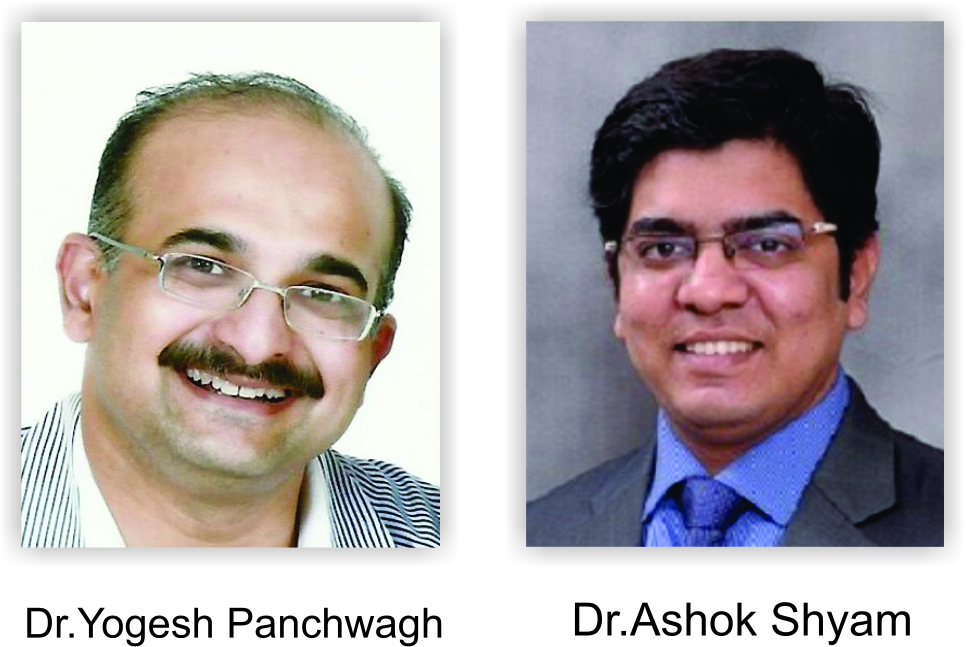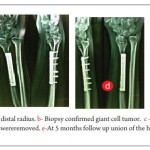M.D.T. (Multi Disciplinary Team) For Sarcomas: A Must !
Vol 1 | Issue 2 | Sep- Dec 2015 | page:1-2 | Dr. Yogesh Panchwagh & Dr. Ashok Shyam.
Author: Dr. Yogesh Panchwagh [1], Dr. Ashok Shyam [2,3].
[1]Orthopaedic Oncology Clinic, Pune, India.
[2] Indian Orthopaedic Research Group, Thane, India
[3] Sancheti Institute for Orthopaedics &Rehabilitation, Pune, India
Address of Correspondence
Dr. Yogesh Panchwagh.
Orthopaedic Oncology Clinic, 101, Vasanth plot 29, Bharat Kunj Society -2, Erandwana, Pune – 38, India.
Email: drpanchwagh@gmail.com
Editorial: M.D.T. (Multi Disciplinary Team) For Sarcomas: A Must !
“Coming together is beginning, keeping together is progress, working together is success”: Henry Ford.
Henry Fords quote can be aptly extrapolated to the clinicians working in the field of orthopaedic oncology. Many a time, it is seen that interaction between various specialties is of paramount importance to reach to a logical conclusion while dealing with bone and soft tissue tumors. The rarity of these lesions and often-encountered complex clinical scenarios makes it mandatory for the treating clinicians to sit together to decide the diagnosis and further line of management. The multi disciplinary team (M.D.T.) that thus ensues is the key to success in management of bone and soft tissue tumors.
A typical M.D.T. comprises of (but may not be limited to) the sarcoma surgeons, medical and radiation oncologists, Pathologists, radiologists, Palliative care and rehabilitation specialists. It is expected that the institute where the M.D.T. is located should have reasonable experience in managing sarcoma patients. This number may vary from country to country. For example, In the U.K., it is expected that such an M.D.T. should be seeing at least 100 new soft tissue sarcoma cases every year or 25 primary bone sarcoma cases every year [1,3].
It is expected that all cases or suspected cases of sarcomas should have a speedy access to diagnosis and treatment. All diagnosed cases also need to be reviewed by a specialist in the M.D.T. The surgical management including the initial biopsy and definitive resection, chemotherapy and radiotherapy are to be carried out by member of a sarcoma MDT. In case that a surgeon who is a M.D.T. member is not available, the surgery should be done by a surgeon with tumor site-specific or age-appropriate skills, in consultation with the sarcoma MDT. Informing patients about relevant clinical trials and support to enroll into the trials as appropriate also forms a responsibility of the M.D.T [1,2,3,4].
Such MDT’s should be developed at individual centers that specialize in management of sarcomas. The advantages of such MDT approach is manifold. First it will allow complete and detailed assessment of patient and the disease at single center which will help in early and accurate diagnosis of the disease and extent of the disease. It will also help in more precise planning of management strategies and much better patient care. Sarcomas are unique diseases in the sense that they invoke a great sense of anxiety in the patients and their caregivers. These diseases have strong emotional responses and many a times lot of confusion exists in minds of the affected. In our country this leads to a varied response which many a times includes patient being referred and consulted by many doctors and surgeons before reaching a proper channel of care. A single coordinated MDT will help the patients to reach this channel much earlier. A coordinated approach at single center will help curb the patient’s and caregivers anxieties to a large extent and will also be much more convenient to them. The Australian Sarcoma Study Group have gone through the literature and produced evidence supporting MDT approach through following conclusions [1,2,3] :
1. MDT: Treatment at a dedicated MDT center results in better patient survival, decreased amputation risk, better chances of disease free survival. Also MDT center follow the clinical practice guidelines and have appropriate use of preoperative imaging and biopsy.
2. Supportive care: This is one of the most important aspect of patient care that help in providing better care for the patient as a whole. It helps in improving the quality of life, patients stay fewer days in the hospital, require fewer home visits and have better physical, social and emotional responses.
3. In MDT scenario the expert panel of radiologist will be able to diagnose the disease early and also pathological diagnosis is much more accurate in MDT settings.
There have been some attempt to bring together various specialties in our country too. Specifically there have been common forum and meetings where specialties have come together to share their views. Few centers have regular interspeciality meetings too. The Indian Musculoskeletal Oncology Society has organized a multifaculty meeting in Pune in October 2015 and hopefully they will continue to foster this development. Centers that specialize in sarcoma care should realize the importance of MDT approach. Although specialized centers do have coordinated approach, a more formal MDT body will help make the system more organized and effective. Journal of Bone and Soft Tissue supports the multidisciplinary approach and the first issue had authors from almost all specialist involve in sarcoma care. We wish to involve more specialties and specialist involved in sarcoma care with JBST and in coming issues our focus will be to publish articles with more coordinated approach to oncology care.
The MDT approach has been successfully used in many countries. In fact the U.S. National Cancer Control Network (NCCN) (www.nccn.org) and the U.K.s National Institute for Health and Clinical Excellence (NICE) (www.nice.org.uk) both have detailed recommendation for use of MDT approach in management of sarcomas. The developing countries too need to follow a similar model in the interests of the sarcoma patients. It is still not very uncommon in a country like India, which dreams of a digital revolution, to see examples of late diagnosis, improper biopsies, incorrect interventions and non-evidence based management. We believe that there is a need to prepare our own guidelines, modified according to suit the geography, disease prevalence and health care and infrastructural capabilities and to promote the concept of MDT in the care of sarcomas.
Yogesh Panchwagh & Ashok Shyam
References
1. National Institute for Health and Clinical Excellence, 2006. Improving outcomes for people with sarcoma. NICE guidance on cancer services.
2. Robert Grimer Nick Athanasou, Craig Gerrand, Ian Judson, Ian Lewis, Bruce Morland, David Peake, Beatrice Seddon, and Jeremy Whelan.
UK Guidelines for the Management of Bone Sarcomas.
Sarcoma. 2010; 2010: 317462.
3. Why Multi disciplinary care is important in sarcomas. www.australiansarcomagroup.org/multi-disciplinary-care.html
4. The ESMO / European Sarcoma Network Working Group. Bone Sarcomas: ESMO Clinical Practice Guidelines. Ann Oncol (2014) 25 (suppl 3): iii113-iii123.
| How to Cite this article: Panchwagh Y, Shyam AK. M.D.T. (Multi Disciplinary Team) For Sarcomas: A Must ! Journal of Bone and Soft Tissue Tumors Sept-Dec 2015; 1(2):1-2. |
(Abstract) (Full Text HTML) (Download PDF)




